Table of Contents
What is a Spy Movie?
Spy movies themselves share this kind of legacy, being one of the oldest and most familiar movie sub-genres.
Contemporary spy movies are typically led by a protagonist who is a trained operative, who embarks on a mission against an opposing, oppressive force.
Spy movies often depict:
- Nations waging shadow warfare.
- A covert government operation in conflict with an organization headed by an individual.
- Infighting within a team or organization.
The spy genre’s highest-grossing film of all time is not a Bond film, not a Mission: Impossible film, not part of the Bourne franchise but, in fact, the children’s animated movie Despicable Me 2.
Yes, folks, you read that correctly! At the time of writing, Despicable Me 2 has a lifetime gross of over $368 million USD and outmatches Skyfall by $60+ million USD. This proves the versatility and universality of spy movie tropes.
What are the Top 10 Grossing Spy Movies of All Time?
- Despicable Me 2
- Skyfall
- The Bourne Ultimatum
- Mission: Impossible – Fallout
- Mission: Impossible II
- Austin Powers in Goldmember
- Mission: Impossible – Ghost Protocol
- Austin Powers: The Spy Who Shagged Me
- Spectre
- Mission: Impossible – Rogue Nation
Franchises dominate the spy movie marketplace. James Bond, for example, has twenty-five movies in total and has grossed close to $7 billion USD to date.
So it’s fair to say that spy films are a relatively safe bet when it comes to writing genre. But how do you approach writing such an intricate genre? What steps are essential to tackle when writing a spy movie? We take a look…
10 Steps to a Great Contemporary Spy Film
1. A Fascinating Protagonist
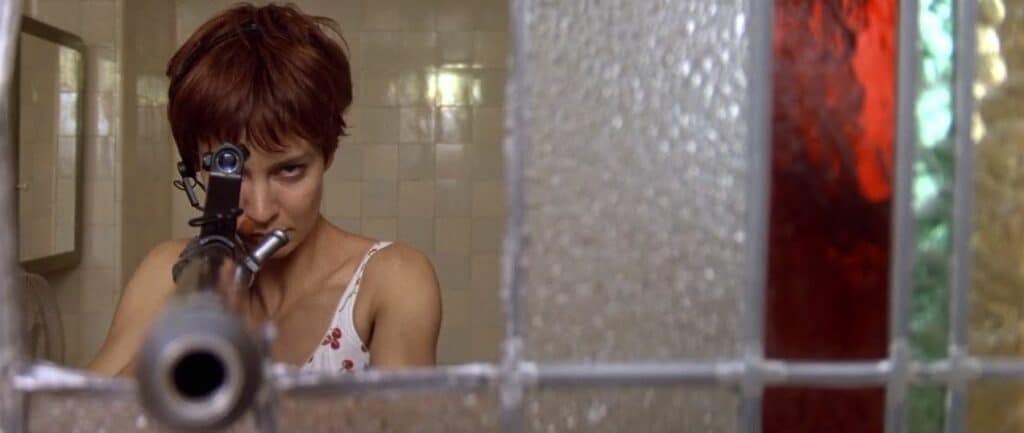
As with all forms of entertainment, audience engagement comes first. And creating an intriguing protagonist is a must to achieve this first and foremost. The spy protagonist will typically have the following elements…
A Past:
- In Nikita, for example, the protagonist begins the film as a down and out punk who commits armed robbery. Faced with life in prison, Nikita takes an offer from the government and becomes an undercover agent.
- The Bourne Identity: a man found at sea with gunshot wounds cannot remember his past and this is what forms the driving force behind the entire film, nay, franchise.
- James Bond is an orphan and suffers from a multitude of personal problems including alcoholism, workaholism and difficulty with intimate relationships.
- Ethan Hunt from Mission: Impossible is a simple farm boy who went on to excel in the Special Forces.
- Jim Donovan in Bridge of Spies is an average insurance lawyer who is appointed to represent a man charged with being a Russian Spy.
An Introduction That Bites (whether it makes it to the final cut, or not!). For example…
- Sam’s (played by Robert De Niro) introduction in a draft of Ronin:
- “The silhouette steps into a POOL OF LIGHT. This is SAM. Tough, lean, enigmatic. Somebody you might trust, but whom you’d never cross.”
- Ethan in Mission: Impossible:
- “ANATOLY reaches up to his face — –and tears away a mask of flesh. He’s no middle-aged Russian mobster, he’s ETHAN HUNT, an American in his early thirties.”
- Jim Prideaux in Tinker Tailor Soldier Spy:
- “TRACKING down a bustling street, as the jets scream by overhead. Pedestrians look up. All except one man who continues walking. This is JIM PRIDEAUX.”
Ronin Act I plays out differently on screen versus the 1997 version available online. It is interesting that Sam’s character elements remain the same while scenes are chopped and changed. Hence, this highlights the importance of smart rewrites!
“Lady, I never walk into a place I don’t know how to walk out of.”
– Sam, Ronin (1998)
The 1997 version of Ronin begins in a medieval cathedral with a totally different tone: a murder has taken place and a killer is stealing a briefcase. This draft scene does not suit the serious tone of Ronin and it is no surprise it was left out of the final project. The on-screen Ronin Act I zones in on the who and where and shows the audience who Sam is, without saying a word.
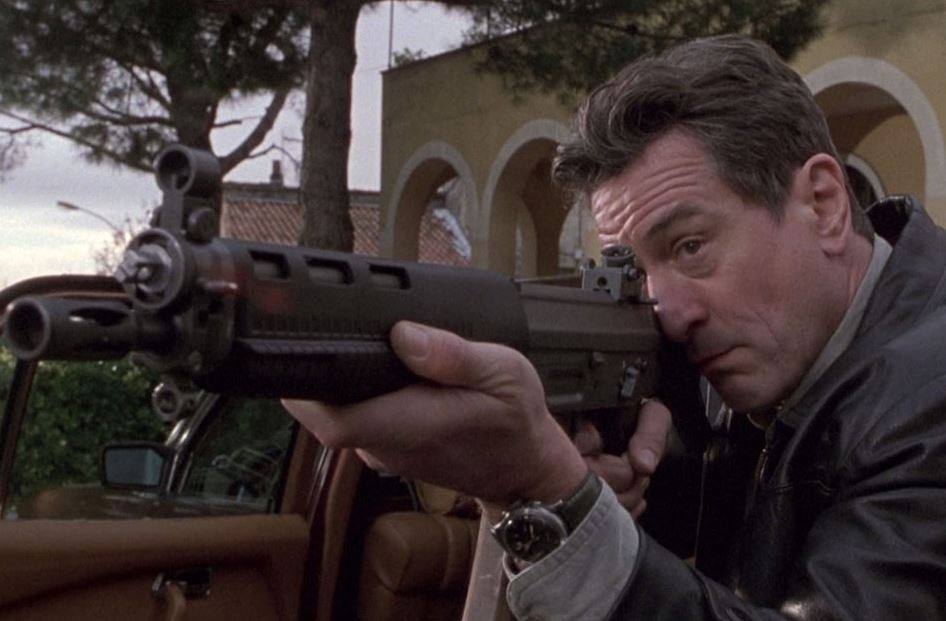
2. Friends and Frenemies
As a spy film protagonist moves through the story they will meet a number of people along the way, including friends and frenemies. The protagonist must have these consistent supporting characters to bounce off. They help provide a context to what can often be a cold protagonist or a cold world.
Additionally, they help in giving the story stakes. Whilst spies are often cast as lone wolves, having people around them aids their characterisation, coaxing them out of their shells and providing a reflection of sorts.
There’s also a practical element to these supporting characters, being that these spies often work on behalf of large organisations. These characters put a face to large shadowy institutions, making the context feel more believable.
For example…
Marie Kreutz in The Bourne Identity
- We first meet Marie Kreutz at the US embassy in Zurich as a customer service worker’s nightmare.
- She decides to help Bourne out and drive him to Paris, which instantly saves him from being found by embassy security/Zurich police.
Felix Leiter in the James Bond Franchise
- Felix Leiter is James Bond’s CIA counterpart and has appeared in ten Bond movies.
- Leiter’s most notable function in recent years was in Casino Royale, giving Bond the money Vesper refused to put up for the game of poker. This leads to Bond winning.

Vesper Lynd in Casino Royale
- Vesper works for the British Treasury.
- She is brought in to bankroll Bond in a high stakes game of poker.
- After Bond loses, Vesper refuses to cover an additional buy-in.
- After being poisoned at the poker game, Vesper saves Bonds life.
- Vesper goes on to betray British Intelligence (and Bond).
3. Convincing Antagonists
Spy films see a number of zany and quite frightening antagonists. These characters are essential for the proper functioning of the story.
With no antagonist, the story and protagonist will have no purpose and no stakes. Spy movie antagonists can take a number of varied forms though and are often far from simple. For example…
Raoul Silva in Skyfall
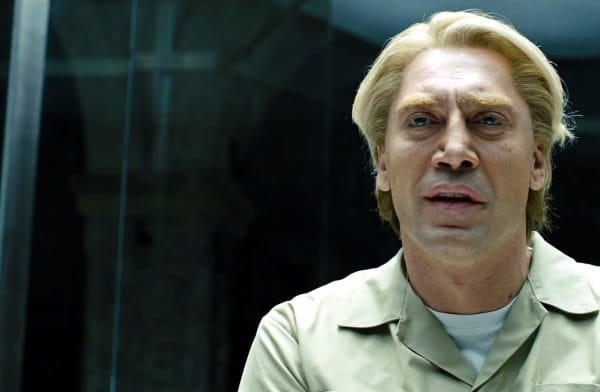
- Silva has a bone to pick with Dame Judi Dench’s M in Skyfall.
- As an operative working for British Intelligence in Hong Kong, the young Silva goes too far in hacking the Chinese.
- M was a section chief in Hong Kong at the time of the hack.
- With the Chinese Government closing in on British Intelligence, because of Silva’s hack, M swaps Silva in a prisoner exchange with the Chinese Government for six other men.
- After five months of torture in Chinese custody, Silva purposely ingests cyanide after figuring out it was M who turned him in. But instead of dying he is left mentally and physically scarred.
- Once out in the world again as a free man and using his computer hacking ability, Silva builds a criminal empire and turns his attention to MI6 with revenge in mind.
Raoul Silva is a typical Bond villain in a number of ways:
- Past trauma.
- Genius-level IQ.
- A wish to take over and or destroy part of the world, and make money whilst doing it.
- A hatred for all things James Bond and MI6.
It’s important to think about why these villains share these characteristics in relation to what makes a good antagonist. For example, they all share a fierce intelligence, a difficult backstory and a hatred of authority. These are all elements that combine to make them convincing in the why of their quest to destroy Bond.
And these elements should manifest in the how and why of their drive, rather than merely in superficial ways such as through facial disfigurement – a trope that can be seen throughout the Bond films and is typically used as a lazy shortcut for villainy (Le Chiffre, Ernst Stavro Blofeld (pre-2006 Bond), Alec Trevelyan, Lyutsifer Safin).

Terrorists in Spy Movies
Terrorists also form the basis for many spy movie antagonists. Real events often serve as the inspiration here. For example…
- Munich (based on real events) sees Mossad agent Avner Kaufman given the task to track down and assassinate eleven people linked to the terrorist cell Black September.
- Zero Dark Thirty (based on a true story) charts CIA analyst Maya’s attempts as she tracks down Osama Bin Laden in the Middle East.
- Ronin involves retrieving a silver suitcase and a Northern Irish terrorist group.
The Protagonist’s Government as a Villain
- The Jason Bourne franchise is literally about Bourne at odds with the US Government, whose law-abiding and covert departments pursue him.
- Snowden (based on a true story) sees the protagonist at odds with his country’s surveillance practices, which leads him to become a whistleblower.
- In Three Days of the Condor, Joe Turner faces off with the CIA itself.
Gangs
- Man on Fire follows washed-up, former CIA operative, Creasy (Denzel Washington) as he burns a Mexican gang to the ground.
Whatever or whoever the antagonist is, make sure that they are as interesting as the protagonist. Writing an antagonist that does not feel interesting or convincing can undermine the whole story, as this is what is meant to be driving the protagonist.
The antagonist‘s motivation is key to this. For example, a vague desire to take over the world can feel too easy and unconvincing. But the motivation of personal revenge or complex subterfuge (such as from the protagonist‘s own government) can make the stakes feel real and tangible.
4. Gadgets

Mission: Impossible and James Bond far outweigh their spy film rivals in their use of gadgets to beat the villains, to stay alive, and to escape from awkward situations. Gadgets demonstrate the spy’s skill and the sophistication of their work.
They’re a moment for the audience to coo at the technology and intelligence the spy (and/or their organisation) holds. In this sense, they’re a moment for the audience to embrace the fantasy of the story.
Whilst the gadgets may be plausible in real life, they provide a moment for the story to embrace its cinematic form – wowing the audience with a display of technology in an often dynamic, exciting way.
Gadgets in spy films can be outlandish, but here is a pick of the most innovative as examples of how to use technology as its own kind of set-piece:
Munich
- The bicycle pump gun. This lethal gadget allows agents to cycle up to a boathouse in the Netherlands and carry out a revenge assassination.
- Telephone bombs and bed bombs. These bombs will have you on the edge of your seat, coming anywhere from everyday items.
Mission: Impossible Franchise
- Face masks and voice synthesizers. These gadgets allow agents to deceive others and gain access deep into enemy networks.
- Exploding chewing gum. No door in the room? Don’t worry, you can always make your own exit with exploding chewing gum.
- Camouflage screen. Ethan uses this device to have a stroll around the Kremlin.
James Bond Franchise
- Little Nelly plane (aka Wallis WA-116 Agile). In true James Bond form, Little Nelly has a few surprises with a control panel for aerial mines and flamethrowers.
- Ericsson JB988. This smart phone includes a fingerprint scanner, high voltage taser, and remote video control for Bond’s BMW 750iL.
- Aston Martin DBS V12. In the Casino Royale reboot, Bond’s Aston Martin does not include any gadgets, that we know of, bar an extra gun and an emergency medical station that has a remote health scanner which saves Bond’s life.
- No Time to Die‘s Aston Martin does include extras, including mini-guns hidden behind the headlights.
- Honorable mention: Rosa Klebb’s shoe dagger in From Russia With Love. Evil side-kick Rosa Klebb’s gadget is as deadly as they come as this shoe has a concealed poison tipped-dagger.
Snowden
- Rubik’s Cube. Edward Snowden uses his charm and a modified Rubik’s Cube to smuggle an SD card through NSA security (an act of cinematic licence for sure).
Whether they’re a realistic and impressive display of technology or a flight of fancy, gadgets can provide a wow moment for a spy movie. They justify the genre in this sense, proving that this spy is no ordinary action hero. Instead, they’re at the forefront of innovation and technology in an exciting and intriguing way.
5. Car Chases
What is with Paris and American spy films?
In John Frankenheimer’s Ronin, there are several car chase scenes. The most epic takes place in Paris and is considered one of the greatest car chases of all time.
- The Bourne Identity has an awesome car chase in Paris, with Bourne at the wheel of a vintage Mini.
- And there is more, Mission: Impossible – Fallout features a motorcycle chase through, wait for it, Paris.
- Not to forget James Bond’s Paris pursuit of May Day in a stolen taxi cab that has its roof torn off and is chopped in half.
So why Paris? Well, it perhaps represents another important spy movie element, glamour. This illustrates how spy movies function as escapism. Why just have a car chase in a suburban town when you could go to Paris and have the sights and sounds whizzing by in the background?
The spy is meant to be sexy in this way, a purveyor of international espionage. And the setting can often reflect this. It’s an opportunity for the audience to enjoy more than just the action at hand but the background too.

How Do You Write a Car Chase?
Car chases can be difficult to format for scriptwriters, as there is no set formula. Setting up a sequence or montage circumvents the need to block up the page with individual scene headings for each cut. As the scene preceding the car chase generally sets the location and time of day, these details do not need to be restated.
- Condense the scenes together under a MONTAGE or SEQUENCE heading.
- Additional information can be given in ACTION.
- The Ronin draft Paris chase heading is, for example: INT./EXT. – CAR CHASE MONTAGE
- Additional info in ACTION: During this SEQUENCE, we’ll JUMP CUT BETWEEN the two cars and the streets they travel through.
- Instead of individual scene headings, you can use indicators for clarity: IN THE PEUGEOT – / IN THE COMPACT – / OUT IN THE STREET –
That is all the information that needs to be included for this kind of fast-moving action. Try and keep the action flowing in a way that is readable and enjoyable. Whilst it is a set of instructions for the production, you also want it to be clear and engaging for the screenplay reader. If they’re disoriented by the action, they’re missing the point.
6. Explosions
Are explosions important in spy films? Well, yes clearly!
It’s not though that the explosions just represent the audience’s desire to see spectacle in a spy movie. But it’s that in a genre that is typically repressed, tense and covert, explosions represent the part of the story where all that tension is released.
So explosions represent tension in this regard, either in anticipation or release. Should you feel inclined to include an explosion in your spy film? Well, no not at all and not every spy film will include an explosion, of course. However, what you need to be doing is assessing where the tension is and how it can be released.
Your script needs to include metaphorical explosions if not literal ones, energy building up until it has to be released in a cinematic manner.
- Munich is very much a film with an understanding that bombs are the best way to carry out the mission. And the film rattles the audience through its relationship to bombs, what can go wrong with them, and the after-effects of being a bomber.
- In The Bourne Identity, Jason sets off an explosion by shooting a gas tank with a shotgun. The result is that a sniper is unable to see through the flames and smoke, and this also shows the audience that Bourne can think on his feet.
7. Weapons
Weapons are an important addition to the perfect spy movie and you need to know your rotary cannons and machine guns. But if writing a spy script, do not become bogged down in terminology, simply using “automatic weapon,” “handgun” or “rifle” will typically suffice in describing weapons.
Often the weapons used in spy films match the activity the protagonist is currently acting out. So, don’t bring a gun to a knife fight or vice versa.
Weapons Can Form Part of the Story:
- The bombs in Munich are used for the mission but also cause lifelong psychological scars to those involved and to the greater global consciousness.
- In Ronin when the team goes to pick up weapons, there is a double-cross and a shoot out. It results in Spence (the weapons man) leaving the team. But it also shows Sam as a stone-cold professional.
- GoldenEye is primarily about a type of satellite weapon that can cause global catastrophes.
- The controversial and much talked about weapon of choice in Zero Dark Thirty is torture.
Having No Weapon At All:
It’s somewhat of a spy movie/action cliché but it is nonetheless an effective way of demonstrating the protagonist‘s skills. It also can provide the opportunity for some exciting and innovative set-pieces. For example…
- Brian in Taken is knocked out and handcuffed in Saint-Clair’s basement. Using his special set of skills, Brian manages to escape and uses his bare hands and a fire extinguisher to dispose of three baddies.
- Jason Bourne is on the run, so he has no access to advanced weaponry. Throughout the franchise, he uses his mysterious fighting instinct to defeat his aggressors. At times the hand to hand combat can become grizzly with Jason resorting to using household objects such as a ballpoint pen, a rolled-up newspaper and a hardcover book.
8. Intimate Relationships
Spy films are not all explosions, car chases, and fistfights. Intimate relationships will take center stage too. The protagonist needs stakes to care about and fight for as well as something to humanize and ground them.
Whilst it can often feel cliché, the love interest forms an important part of the spy movie as it a) gives the protagonist something to fight for b) makes them vulnerable to the antagonist and c) gives the antagonist force something to bargain with.
The intimate relationship can manifest in a number of different ways. For example…
James Bond Franchise
- Bond’s intimate relationships are entangled with the type of work he does and all too often this results in the death of his love interest.
Bourne Franchise
- The assassination of Bourne’s lover, Marie Kreutz, in The Bourne Supremacy gives him a reason to come out of hiding.
Munich
- So affected by his work, during lovemaking Kaufman suffers flashbacks of the assassinations.
- By the film’s end, it is clear that Kaufman will never be the man or husband he once was.
Snowden

- Ed’s issues are not flashbacks but work-related paranoia.
- While lovemaking, Ed suspects he is being watched through his own computer’s webcam by Big Brother, or in essence: his boss.
9. Location, Location, Location
Exotic and international locations are what make producers cry to sleep at night, but are what audiences often expect from a contemporary spy film.
As discussed earlier, an exotic location represents the element of escapism present in a spy film. They also allow the protagonist to be a fish out of water, highlighting their alienation. Often a new location will accentuate the essential conflict of the film, isolating the protagonist and antagonist amidst a rich backdrop.
Think of how often a chase scene is made even more interesting by the aliveness of the background and the locations that fly by. Or how a scene in which the protagonist takes a breather against a stunning backdrop. Location can play an important role in characterising the film.
How do you make the location clear in the script itself? Well, it’s all about making the setting a purposeful and present choice. Whilst the location can always ultimately be changed, especially on a big production, try and make the location mean something within the script.
This can always be substituted – a big city for another big city, for example. However, if the setting plays a tangible role in the story or scene’s tone then the production team will have a good idea of what to look for if the first option isn’t available.
10. Topics and People in Great Contemporary Spy Films
All spy movies fit a formula whether we like it or not, giving rise to repeated elements. And this will take the form of some familiar subjects in spy movies. In writing your own spy film, you’ll need to find a meaty subject to act as the basis of your story.
Typically, a spy film cannot just be about pure characterisation, for example. Instead, it has to take as its core a distinct plot focusing around a relatively specific subject. This might be espionage over a conflict, the plot to save the world from a maniacal villain or the quest to retrieve a specific piece of information.
Some typical spy film topics include:
Murder/Assassination
- In spy movies, somebody is always being murdered, about to be murdered, or is in the process of being murdered.
- Besides characters named HENCHMAN 8, generally, murder is a spectacular event for antagonists.
- For supporting characters there is a sinister or cruel element (such as Strawberry Fields’ death in Quantum of Solace, for example).
- Resolution generally only involves the killing of the antagonist or incapacitation (prison).
- If an antagonist survives death, it can spell a slot in the next movie/s. For example, Ernst Stavro Blofeld (Christoph Waltz), Bond’s evil foster brother, returns in No Time To Die from his prison cell.
Surveillance
- This is the name of the game: I steal your microfilm, you steal mine.
- Developing from governments spying on each other, film has modernized to governments spying on each other and normal citizens.
- Spy films create a world in which everyone is being watched and no one is safe. This helps create tension, the feeling permeating the film that every action has a consequence.
WWII and the Cold War
- From Casablanca to Bridge of Spies, the spy film genre is packed with action from this dark 20th-century era.
- This was a historical period in which the use of spies was frequent in warfare.
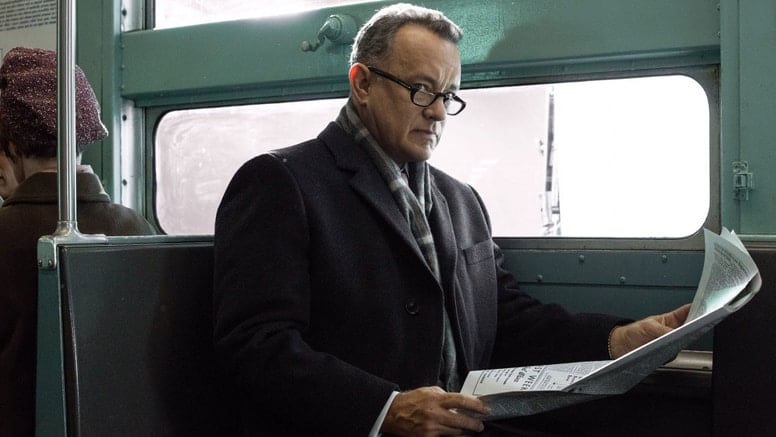
CIA, NSA, MI6, KGB
- These agencies can be the real bad guys in a spy film, both destroying their operative’s lives and the lives of, well, everybody else in the world!
- Protagonists in spy films generally work for one agency or the other or an entity with the attributes of the CIA, KGB, etc.
- Conspiracy and paranoia are what keep these agencies sustained in film. If the CIA, NSA, MI6, or KGB are involved, expect something as sneaky as the Trojan Horse!
- In the absence of specific war contexts (such as World War II), these government agencies are often at war with their own citizens during ‘peacetime’.
Revenge
- Revenge is sweet for the audience (when done well) and is also a great plot thickening device.
- Munich is a spy film with revenge at its heart, where nobody stops until they have an eye for their eye.
- At the end of Quantum of Solace, M says to Bond that Dominic Greene was found dead, with a belly full of motor oil. This is a kickback to the death of Strawberry Fields.
Showdowns
- Face-to-face showdowns between the protagonist and antagonist usually occur in high budget, high concept spy films.
- The spy protagonist will have a specific target or will be themselves a specific target. So, therefore, the film generates the expectation of an eventual showdown between these two forces.
Rescues/Escape
- A protagonist at times has to rescue a person.
- In Argo, for example, the entire film revolves around a rescue.
- The protagonist must escape a situation or close call where all seems lost.
The Double-Cross
- Friends, lovers, bosses/organizations, colleagues, colleagues who supposedly died years ago, etc. The double-cross can bite from any corner.
- As spy films involve so much secrecy, the double-cross can feel like a given. Someone is always waiting around the corner with a plan to usurp someone else.
Assassination
- Spy film protagonists can be assassins, yet, on the other hand, spy film assassins may not be spies.
- James Bond is an MI6 agent with a license to kill. This makes him both a spy and an assassin.
- Jason Bourne is primarily trained as an assassin and not a spy. As the first film progresses Bourne takes on spy qualities given the escalating situation.
- Often the protagonist will be tasked with killing a specific target and this will make up the bulk of the plot.
Whatever the choice of subject matter, it should always be something distinct and purposeful. This is obviously the case with most plots in general. However, considering a spy film can contain so much mystery, repression and subterfuge – a distinct context and a distinct plot line feels essential. It helps lay the groundwork for the other elements of the genre, discussed in this list, that are also important.
A spy film is an opportunity to lean into the trappings of genre and tell a big, ambitious story at the same time. Find a rich context and apply the key spy movie elements and you have the basis of a gripping cinematic experience.
– What did you think of this article? Share It, Like It, give it a rating, and let us know your thoughts in the comments box further down…
– Struggling with a script or book? Story analysis is what we do, all day, every day… check out our range of script coverage services for writers & filmmakers.
This article was written by Michael Moore and edited by IS staff.
Get *ALL* our FREE Resources
Tackle the trickiest areas of screenwriting with our exclusive eBooks. Get all our FREE resources when you join 60,000 filmmakers on our mailing list!

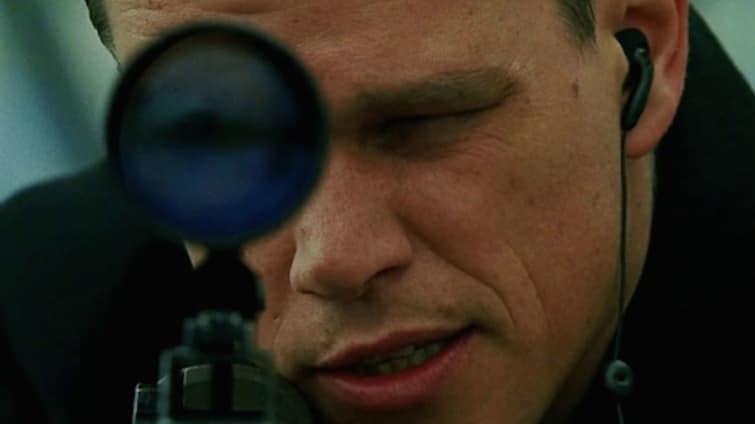
As someone with disabilities and an advocate for those with disabilities/deformities, I am disappointed that facial deformity is listed as a good element for a villain. While mentioning that has been a trend, it should be noted that it is a VERY problematic trend that does damage to the disabled/deformed community, spreading hate and stigma. Please become more educated on the damaging effects of this trope and help others realize it is a trope that needs to end. Here is one article of hundreds explaining the issue in more depth: https://www.bbc.com/culture/article/20190525-cinemas-shameful-history-of-demonising-the-scarred
Excellent article. I was an ASA/NSA Operative for many years. Currently writing a screenplay that takes place in Israel between a CIA/Mossad ensamble team, led by a femme fatale character, and an international saboteur and his terrorists who are hell bent on destroying Israel’s natural resources extraction. He is headed, of course, by an international oil cartel and government conspiracists. The twist comes later when it’s found that the real prize the cartel is after is a new mineral that is harder than diamonds. On par with James Bond and Mission Impossible that is unique and original. Working title is “Operation Jaeger.”
Thanks for the kind words Kenneth, and good luck with your project! We’re here to help if you require notes.